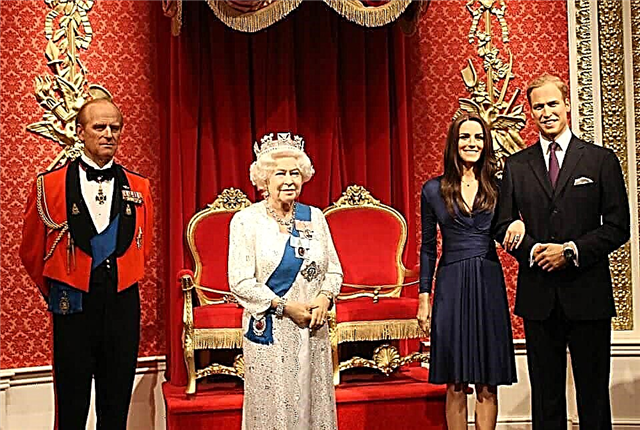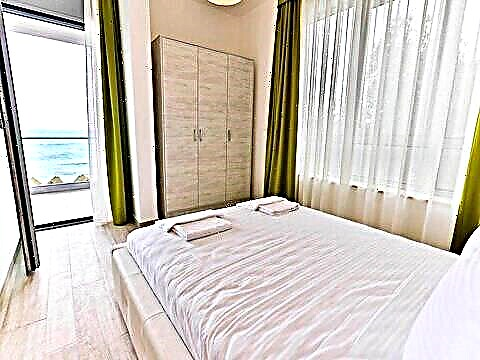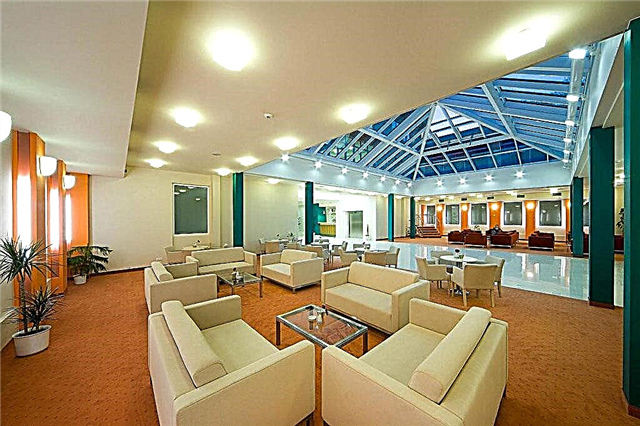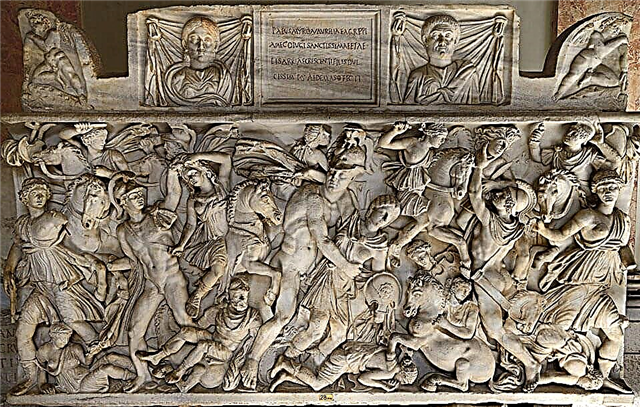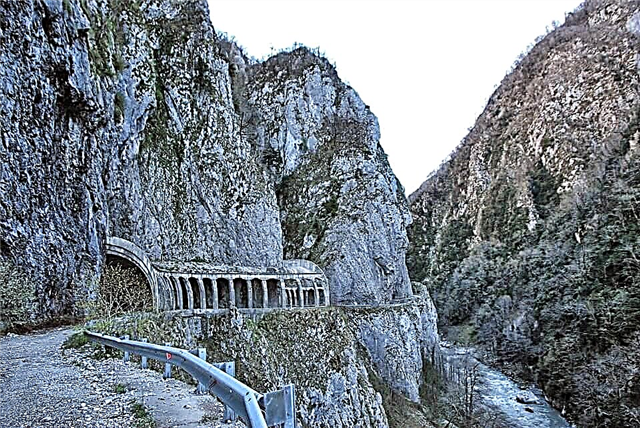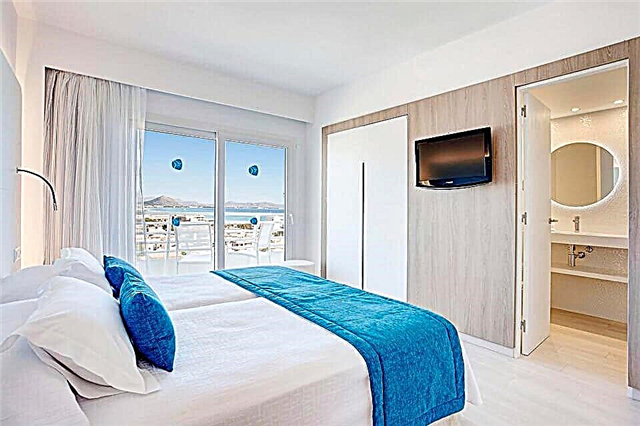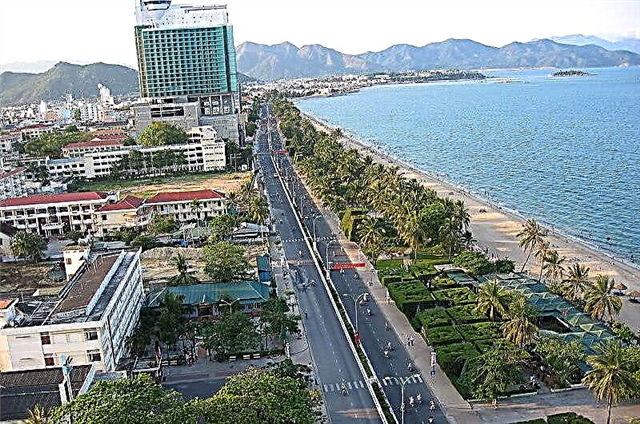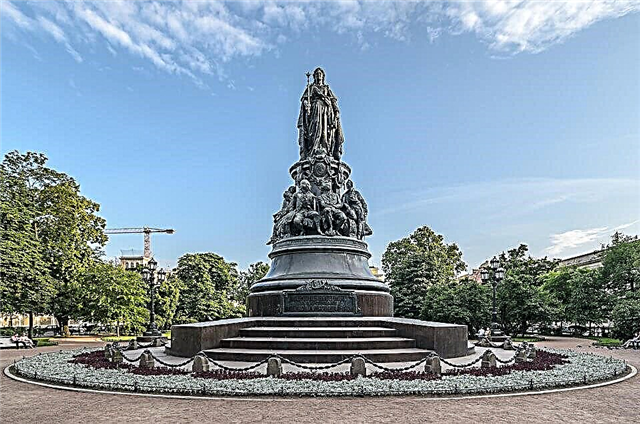If you have not yet visited the cultural, historical and architectural pearl of Russia - St. Petersburg, then we can say in advance that there will be no limit to your admiration. The brainchild of Peter the Great is a storehouse of magnificent architectural monuments, each of which is directly or indirectly associated with the names of great, world-famous personalities. This article is a guide that allows you to see the most significant sights of the northern capital from Ligovsky Avenue to Nevsky Prospect as part of a self-guided tour.
Loft Project Floors

This is the name of the cultural and exhibition center, organized in the premises of a former bakery (loft - adaptation of industrial buildings for housing or cultural and entertainment facilities). It was opened in 2007 at the initiative of the current director M.V. Romashova and was marked by an exhibition of works by E. Logan and I. Kuksenayte.
On 5 floors of the building with side walls decorated with picturesque paintings, culture now "reigns": various exhibitions are held, lectures on the themes of art; performances and entreprise, all kinds of master classes are held. The facade of the building with arched arches of display windows on the 1st and 2nd floors looks majestic.
The designers of the art project did not undergo a radical reconstruction of the building: they have retained many elements of industrial use, successfully combining modernist details with them outside and inside. Leaving the configuration of the ceilings unchanged, the Archipenko brothers decorated huge spaces with antiques and avant-garde items, turning the premises of the bakery into magnificent halls and halls that make up a "temple of modern art".
Part of the roof has been turned into an open terrace with round tables for meetings and socializing in the fresh air. A hostel is also open here, in which those who wish can rent a room. A visit to "Etazhi" leaves an indelible impression on tourists who come here in a continuous stream.
Address: Ligovsky Avenue, 74.
Bread museum

Where, if not in the former Leningrad, which endured the blockade and well aware of the price of a piece of bread, it was necessary to organize such a museum. Creating it, the organizers based on the catch phrase of the ancient Romans "Bread and circuses!" and united a museum and a cinema in one building.
The exhibits of the museum are thousands of samples of bread products made from wheat, rye, corn and other flour. Through a series of different special devices for baking bread, you can see the history of the development of bakery production in Russia.
The collections of the museum are unusually interesting, demonstrating everything related to the main Russian product. Kitchen and dining utensils of the past, all kinds of forms and molds, without which Russian families could not do; famous art canvases reflecting the "bread" theme; symbolic sculptures and figurines - more than 15 thousand exhibits in total give a broad idea of the role, significance of bread and the attitude towards it in Russia. Tears are caused by the 125-gram junk that saved the lives of the blockade.
Address: st. Mikhailova, 2 or Ligovsky prospect, 74.
Museum of the Arctic and Antarctic

An elegant building with a colonnade at the entrance and on the sides, with a green dome on the roof inside, embodies the history of the exploration of the ice poles of the planet by Russian explorers and polar explorers. The dome on the roof is evidence that it used to be the Nikolskaya Church, erected by Melnikov's design in the 19th century. Such a museum is the only one in Russia and the largest in the world.
The expositions of the museum contain valuable material evidence of the conquest of the Arctic and Antarctic expanses, the development of the Northern Sea Route by Russian polar explorers: original documents of scientific expeditions, photographs, items of equipment, personal belongings of researchers. Of interest are navigation instruments, mock-ups of ships, a real amphibious aircraft "SHA-2", steering wheels from Soviet icebreakers and much more.
Representatives of the polar fauna look mesmerizingly plausible: a group of penguins (skillfully made stuffed animals), polar bears, an arctic wolf, snow partridges. There are many entertaining "highlights" for children, for whom an excursion here will become an unforgettable event.
Address: st. Marata, 24 A.
Dostoevsky Museum

How could you not have such a museum in St. Petersburg ?! Who else, besides Dostoevsky, knew this city of contrasts so deeply, its luxurious palaces and secular salons, well-courtyards and beggarly slums?
The museum was opened in 1971 in honor of the 150th anniversary of the writer's birth in the house where Fyodor Mikhailovich and his family moved in in the fall of 1878 and never left it until his death in 1881.
1st floor - halls for organizing various art exhibitions, seminars, musical and literary evenings. 2nd floor - the writer's apartment and museum expositions, made up of items donated by Dostoevsky's grandson and niece. The interiors of the apartment were created based on the memories of his wife and close relatives. It contains original pieces of the writer's furniture and other priceless rarities.
The exhibitions showcase many documents, manuscripts, photographs, books, theater posters, paintings and graphic works. The heart of the museum is the writer's study, where the silent witnesses of his stay here are kept: a family icon, a box of medicines, a pen, a purse; clock, the hands of which indicate the time of death of Fyodor Mikhailovich.
Address: per. Blacksmith, 5/2.
Vladimir Cathedral of the Icon of the Mother of God

The amazingly beautiful cathedral complex erected in honor of the Vladimir Icon of the Mother of God is the result of the work of outstanding architects. Each of them contributed to the construction of a real architectural masterpiece captivating with the fabulous beauty of the main building and the high bell tower.
Parishioners and tourists constantly come here, to the functioning Orthodox church, to pray and admire the austere but beautiful interior decoration of the church, where every object is a true work of art.
The snow-white wooden iconostasis is decorated with magnificent carved patterns and gilding. There are no numerous murals, except for frescoes depicting 4 evangelists and copies of paintings: Veronese "Lamentation of Christ" and "Transfiguration" by Raphael - genuine artistic treasures.
Address: Vladimirsky prospect, 20.
Beloselsky-Belozersky Palace

Moving further along Nevsky Prospect, one cannot fail to notice a luxurious corner pink building - the Palace of Russian aristocrats, princes Beloselsky-Belozersky. The former appearance of the palace was preserved only in the drawing of the artist Vorobyov M.N. The building acquired its current appearance after the reconstruction of 1847-1848, the author of which was the architect Stackenschneider, who gave the palace the splendor and pomp of the new Baroque.
The original design of the roof with figured superstructures, many windows with gray patterned platbands at the top and bottom, which stand out against the pink background of the walls, sculptures make the palace a unique architectural masterpiece.
Everything inside is as beautiful as outside: magnificent decoration of walls, ceilings, decorated with intricate patterns; amazing openwork staircase railings, chic antique chandeliers - cause an emotional shock. The color solutions of the walls in the halls are also worthy of admiration: green, peach, beige backgrounds are decorated with graceful stucco snow-white medallions and ornaments.
Now the palace is a cultural and educational center, which organizes concerts, theatrical performances, festivals and competitions.
Address: Nevsky prospect, 41 (intersection with Fontanka).
Anichkov bridge

This is not just a bridge, but a work of art, captured in granite and metal, sung in poetry and prose, in documentaries and feature films, a favorite bridge of St. Petersburg residents and guests of the city. The name is inherited from the surname of the design engineer Anichkov; the opening of the bridge over the Fontanka in 1842 became a significant event in the life of the city on the Neva.
Anichkov Bridge has a long history: it has undergone several restorations, additional reconstructions aimed at strengthening the supports and spans. There is a romantic legend about him about the unhappy love of a certain Anichka. Recognized masterpieces are equestrian bronze statues, created by Peter Klodt in 1850, in which the idea of conquering a horse by man is embodied (earlier sculptures were donated by the Russian emperor abroad).
The ingenious embodiment of the author's idea was expressed in 4 sculptural compositions illustrating the difficult victory of a man over a rebellious horse. The beauty and strength of the muscles of an athletic youth and a mighty horse are so spiritualized that they seem alive, not bronze. The cast-iron designs on the fence of the bridge, depicting seahorses and mermaids, are magnificent (sketches by the German artist K. Schinkel). Anichkov Bridge is a landmark known all over the world. Location: at the intersection of Nevsky and Fontanka
Anichkov Palace

There is a building next to the bridge, which should be approached closer to see the majestic, monumental structure - the fruit of the perestroika experiments of many famous architects: Zemskov, Dmitriev, Starov, Ruska, Rachau, Mesmakher and others. This is probably why the building called the Anichkov Palace is so magnificent and beautiful.
The severity of classicism echoes in it with the splendor of the baroque: the huge lower arched windows of the central facade coexist with the classical forms of the upper windows; slender columns surround the entrance; stucco ornament decorates the pediment.
Now the palace, which has undergone many reconstructions inside and out, serves as a cultural and entertainment facility, where excursions are held, documentaries are shown. An interesting history of the former owners of the palace opens before the visitors; the state rooms are mesmerizing with the beauty of their decoration; the winter garden delights, the library of Alexander III amazes with the richness of book rarities.
Anichkov Palace address: Nevsky prospect, 39, A.
Alexandrinsky theater

The next interesting object of an independent excursion along the Nevsky Prospect will be the Alexandrinsky Theater, one of the first Russian drama theaters, opened at the direction of Elizaveta Petrovna in 1756. This event began the history of professional theatrical art in Russia, to which all the emperors paid great personal attention. In 1832, another one was added to the theater building.
Now this architectural complex, designed by the great Rossi, is considered a unique architectural monument and is protected by UNESCO.
The theater was named in honor of Empress Alexandra Feodorovna, wife of Nicholas I. The building of the Alexandrinsky Theater became the hallmark of St. Petersburg. Beautiful and majestic, it is the perfect example of classicism from architecture: the majestic colonnade of the facade, stucco decorations; lattice roof balustrade; equestrian sculptural composition - a chariot drawn by four horses.
The square in front of the theater is equipped with benches under shady crowns, decorated with a picturesque lawn - a real masterpiece of floristry. A visit to the theater, in which the great masters of the stage played, is a significant event in the life of everyone. Children are not allowed to enter the theatrical sanctuary, a teenager over 12 years old is allowed only with an adult.
Address: Pl. Ostrovsky, 2
Monument to Catherine II

Next to the theater there is a majestic monument, which cannot be passed by indifferently - the wisest ruler of Russia, surrounded by her associates, is captured on it in bronze. The famous sculptors Mikeshin, Opekushin, Schreter, Grimm worked on it. A bell is erected on the pedestal - one of the symbols of Russia, on which bronze figures of legendary historical figures of the Catherine era are placed.
Above them is the regal sculpture of Catherine, dressed in a mantle, with a scepter in her hand and a laurel wreath on her head. This monument is a masterpiece of bronze sculpture - a symbol of high art and a tribute to the famous empress.
Gostiny Dvor

The vast monumental building, designed by Wallen-Delamot, was an integral part of the northern capital, an important center for the city's life. The strict classical style of architecture was fully consistent with the business purpose of the object. At the beginning of the 20th century, a department store was located here, occupying an entire block (between Nevsky and Sadovaya St.).
Now it is the most important historical and architectural monument of the 18th century, actively visited by tourists as one of the main attractions of St. Petersburg and a universal shopping mega-center with numerous services and a multi-thousand assortment of goods.
Address: Nevsky prospect, 35.
Nevsky Prospect

Nevsky Prospect - St. Petersburg Broadway, the main street of the city, named after the Alexander Nevsky Lavra, opened in honor of Prince Nevsky. It is 4.5 km of historical, architectural and cultural monuments, 3 bridges over the Fontanka, Moika and Griboyedov Canal. The section of the city from the Admiralty to the Nevsky Lavra, where Gogol, Pushkin, Dostoevsky and their heroes lived, walked, talked, is known to the whole world.

